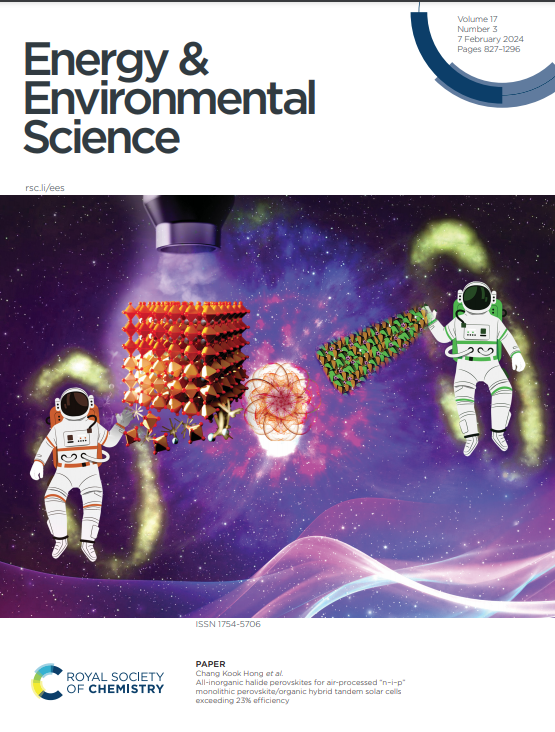Spontaneous Passivation of Selective Zn (101) Plating via Dangling Bond Saturation and Electrostatic Interaction Regulation for High-Utilization, Fast-Kinetics Zinc Anodes
IF 32.4
1区 材料科学
Q1 CHEMISTRY, MULTIDISCIPLINARY
引用次数: 0
Abstract
Although Zn (101) exhibits faster Zn²⁺ plating/stripping kinetics and stronger bonding with Zn2+ compared to Zn (002), the application of Zn (101) in Zn batteries has been limited due to its higher reactivity with water. However, a novel approach utilizing spontaneous self-passivation of plated Zn (101) offers the potential to harness its favorable kinetics and stronger Zn-Zn bonding for battery applications. Here, we present a high-utilization and fast-kinetics Zn anode by promoting selective (101) facet growth and achieving spontaneous passivation of the underlying Zn plating. A non-stoichiometric Sn-O system is selected as the modification material because of its ability of engineering crystal structures (amorphous, rutile, layered) and manipulating electrical polarity (n-type vs p-type). The optimized SnO1.17 saturates dangling bonds of Zn (101), benefiting the preferential growth of well-aligned Zn (101) planes. Besides, the Zn2+ plating location is altered underlying the interphase due to synergetic effects of lower Zn2+ migration barriers of the layered structure and electron-blocking properties of SnO1.17. Consequently, a high Zn utilization ratio of over 91.5% is achieved for 800 hours, with an impressively low overpotential of 43 mV. Furthermore, an anode-free system combining a ZnMn2O4 cathode and a SnO1.17@Cu anode retained 81.6% capacity after 200 cycles.求助全文
约1分钟内获得全文
求助全文
来源期刊

Energy & Environmental Science
化学-工程:化工
CiteScore
50.50
自引率
2.20%
发文量
349
审稿时长
2.2 months
期刊介绍:
Energy & Environmental Science, a peer-reviewed scientific journal, publishes original research and review articles covering interdisciplinary topics in the (bio)chemical and (bio)physical sciences, as well as chemical engineering disciplines. Published monthly by the Royal Society of Chemistry (RSC), a not-for-profit publisher, Energy & Environmental Science is recognized as a leading journal. It boasts an impressive impact factor of 8.500 as of 2009, ranking 8th among 140 journals in the category "Chemistry, Multidisciplinary," second among 71 journals in "Energy & Fuels," second among 128 journals in "Engineering, Chemical," and first among 181 scientific journals in "Environmental Sciences."
Energy & Environmental Science publishes various types of articles, including Research Papers (original scientific work), Review Articles, Perspectives, and Minireviews (feature review-type articles of broad interest), Communications (original scientific work of an urgent nature), Opinions (personal, often speculative viewpoints or hypotheses on current topics), and Analysis Articles (in-depth examination of energy-related issues).
 求助内容:
求助内容: 应助结果提醒方式:
应助结果提醒方式:


